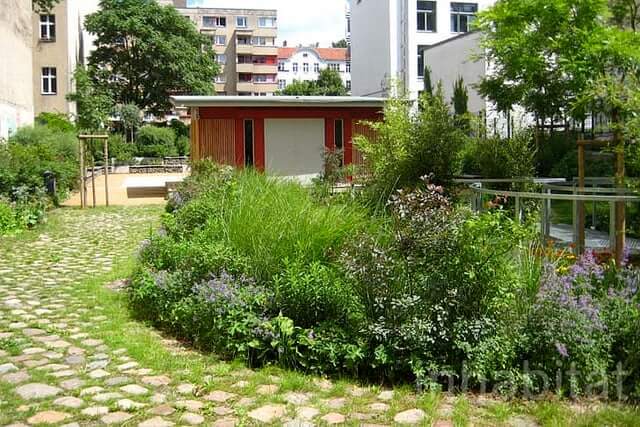Home gardening has evolved from a quaint hobby into a powerful tool in the fight against climate change. It’s an opportunity to reconnect with Mother Nature, nourishing our bodies and souls. But the real beauty of home gardening lies in its potential to make our homes more sustainable and resilient. It’s no longer just about sowing seeds and nurturing plants—it’s about cultivating an ecosystem that contributes positively to our environment and health.
When we choose to garden at home, we say yes to fresh, organic produce nurtured with love, not harmful pesticides. We’re welcoming a cornucopia of flavors, colors, and nutrients straight from our backyards to our plates, making healthy eating easy. We’re enhancing our mental health by engaging with nature, which studies have shown reduces stress, anxiety, and depression. Not to mention the satisfying feeling of reaping the fruits (and vegetables!) of our labor.
But more than that, home gardening allows us to be champions of sustainability. Each time we decide to grow our food, no matter our gardening methods, we reduce our carbon footprint by limiting the miles our food travels from farm to fork. It’s a stand against harmful farming practices that degrade our soils and pollute our waters. It’s a celebration of biodiversity as we invite many beneficial insects, birds, and other wildlife into our gardens.
Creating a sustainable garden, however, goes beyond just planting organic seeds. It’s about embracing a holistic approach that respects nature’s cycles, conserves resources, and contributes to a balanced local ecosystem. Essentially, it’s about creating a garden that gives more than it takes.
Reducing Plastic Waste
Creating a sustainable garden means being conscious of the materials we use. Plastic, while convenient, is a major polluter that can take hundreds of years to decompose. But fear not; there are several ways to reduce plastic use and make your gardening efforts more eco-friendly.
Start by reducing the use of plastic pots and trays. Consider using biodegradable pots made from coconut coir, peat, or even newspaper pots you can make at home. You can reuse containers you already have, like old tin cans or ceramic pots. Invest in good gardening tools made of durable materials like stainless steel or wood. While plastic tools might be cheaper, they often break easily and end up in landfills. And when it comes to watering, a metal watering can outlast any plastic counterpart.
Composting and Soil Health
Healthy soil is the foundation of any garden, sustainable or not. Composting is an excellent way to improve soil health while reducing kitchen and garden waste. Not only does compost enrich the soil with essential nutrients, but it also improves its structure and capacity to hold water.
Composting at home is easier. Collect kitchen scraps like fruit and vegetable peelings, coffee grounds, and eggshells. Avoid meat and dairy products, as they can attract pests. Garden waste like leaves, grass clippings, and non-diseased plant material can also be composted. Mix your compost pile regularly to speed up decomposition and prevent foul odors.
Water Conservation
Water is a precious resource that we should use wisely. Thankfully, there are many ways to conserve water in your garden. One of the most effective methods is to install a rainwater harvesting system. This can be as simple as a barrel placed under a downspout or as complex as a system with pumps and filtration. A drip irrigation system can also significantly reduce water use by delivering water directly to the plant’s roots.
Planting Native and Drought-Resistant Plants
One of the best ways to ensure your garden thrives while using fewer resources is to plant native and drought-resistant species. These plants have adapted to the local climate and soil conditions, making them more likely to thrive with less water and care. This is not only great for conserving water but also promotes local biodiversity.
When you plant native species, you support local wildlife like birds, butterflies, and bees by providing them with natural habitats and food sources. On the other hand, drought-resistant plants can withstand dry conditions by storing water in their leaves, stems, or roots. This makes them perfect for reducing water usage in your garden while providing beauty and functionality.
Encouraging Beneficial Insects and Wildlife
A sustainable garden is a living, breathing ecosystem that encourages the presence of beneficial insects and wildlife. These creatures play a critical role in maintaining a healthy garden by aiding in pest control, pollination, and soil health.
You can attract beneficial insects like ladybugs, bees, and butterflies by planting diverse flowering plants. Habitats like bug hotels or birdhouses can invite these helpful critters into your garden. Avoid using chemical pesticides, as these can harm both the pests and the beneficial insects. Instead, consider natural pest control methods like companion planting, where certain plants are grown together because they repel pests or attract beneficial insects.
Now Get Growing
As the summer sun illuminates our gardens, it’s the perfect time to create a sustainable garden. As you venture into your sustainable gardening journey, be patient with yourself. You’ll likely face challenges, but don’t let them deter you. Every small step you take towards sustainability makes a difference. Experiment with different techniques, learn from your successes and failures and continually seek to make your garden more sustainable.
Creating a sustainable garden is a testament to the harmony between humans and nature. It’s proof that we can coexist with nature, providing for our needs while ensuring the health of our environment. So, let your garden be not just a source of food, but a source of inspiration, a testament to the power of sustainability, and a beacon of hope for a greener future.

